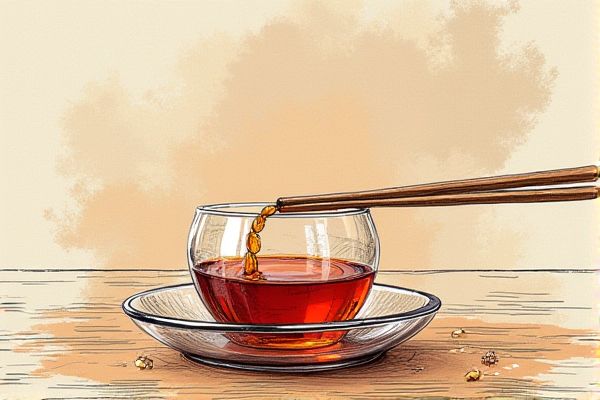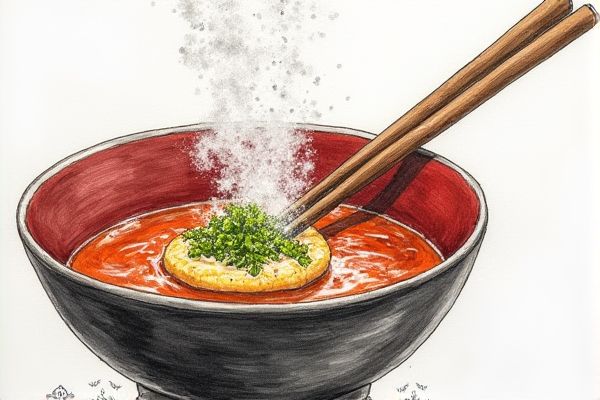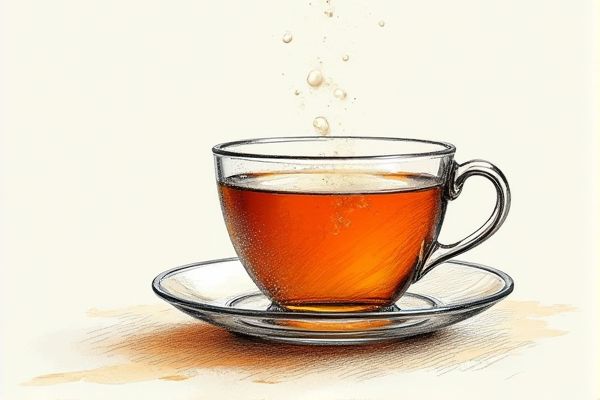Hot sake, a traditional Japanese beverage enjoyed for its comforting warmth and rich flavors, owes much of its allure to the quality of the sake itself. With a storied history woven into the fabric of Japanese culture, selecting the right brand ensures an authentic experience. While certain producers have honed their craft over centuries, each brand offers a unique tasting profile, from the smoothly sweet to the crisp and robust. To navigate the myriad options and enhance your sake-drinking journey, we present a curated list of the best brands for hot sake below.

Illustration of hot sake
Best brands of hot sake in 2025
Dassai
Dassai, a premium sake brand, has garnered significant recognition for its high-quality Junmai Daiginjo sakes, although it is not specifically known for hot sake. The brand's success is attributed to its innovative approach, including the use of a single type of rice, Yamada-Nishiki, and a rigorous rice polishing process, with ratios of 23%, 39%, and 45%. Dassai's revenue has grown exponentially, increasing 40 times over the last three decades, and it now ranks among the top 10 largest breweries in Japan. The brand's global reach includes a significant presence in the U.S., with an overseas production facility in New York. Dassai's production involves a substantial workforce, with 130 production staff, highlighting the importance of manpower in their sake-making process. For more insights into Dassai's innovative practices, visit their official news page.
Gekkeikan
Gekkeikan, a renowned sake producer, is highly regarded for its high-quality hot sake, known as "kan" in Japanese, which is often served at 45°C (113°F) to enhance its fullness of body and mellow flavor. This traditional method is particularly popular during cooler months or when paired with light fare. Gekkeikan's sake, with an ABV of 15.6%, is made from simple, natural ingredients of rice and water, ensuring no artificial additives or preservatives are used. The company, with its headquarters in Kyoto, Japan, and operations in the United States, has been consistent in delivering fresh sake year-round from its breweries. Gekkeikan's commitment to quality and traditional brewing techniques makes it a standout in the sake industry.
Hakkaisan
Hakkaisan Brewery, founded in 1922 in the foothills of Mount Hakkai, is renowned for producing high-quality sake, including its esteemed Junmai Daiginjo, which boasts a crispness and floral scents. This brewery has consistently improved its sake quality through advancements such as the completion of Japan's first underground storage tank in 1983 and the introduction of sophisticated rice-polishing equipment in 1992. Hakkaisan's Junmai Daiginjo is made with premium rice varieties like Yamadanishiki and Miyamanishiki, and features an alcohol content of 15.50% and an acidity level of 1.2. The brewery's commitment to quality is evident in its unique snow storage aging process for its Junmai-ginjo Yukimuro-chozo Sannen, aged for three years. With exports starting in 1995, Hakkaisan has become a global name in the sake industry.
Kikusui
Kikusui Sake is renowned for its high-quality sake, particularly well-suited for hot sake, or "Kanzake," a traditional Japanese method of heating sake that enhances its complex flavors. Established in 1881, Kikusui has been a leader in the sake industry, with its products enjoyed both domestically and internationally. In response to declining sake consumption in Japan, Kikusui expanded its reach by establishing Kikusui Sake USA in Los Angeles in 2010. This strategic move has helped in promoting their sake globally, including their popular hot sake varieties. Kikusui's commitment to quality and innovation has made it a favorite among sake enthusiasts.
Ozeki
Ozeki is renowned as one of the best producers of hot sake, particularly with its Ozeki Premium Junmai, which has been a staple in Japanese restaurants in the USA for over 40 years. This sake is known for its earthy, full-bodied, and slightly dry flavor profile, with a sake meter value of +4 and an alcohol content of 14.5%. Ozeki's innovative approach, such as introducing the "One Cup Ozeki" in 1964, has significantly contributed to the sake industry's growth. The brand holds a market share of 3.25% in the Japanese sake market in Asia and reported revenues of approximately Y=16,376 million in recent years.
Sho Chiku Bai
Sho Chiku Bai, a renowned brand from Takara Holdings, is highly regarded for its exceptional sake, including its hot sake offerings. This brand, which has been brewing sake since 1842, is known for its innovative approaches, such as the micro-filterization process used in their Nama sake, which helps retain the original flavors. The Sho Chiku Bai Classic Sake, brewed in Northern California, won the top prize in the Junmai category of the 2011 U.S. National Sake Appraisal, highlighting its quality. With an ABV of 15%, this sake is praised for its light, smooth, and slightly sweet taste, making it ideal for various culinary uses. Takara Sake USA, established in 1983 in Berkeley, ensures high-quality production and distribution of the Sho Chiku Bai brand. For more information on their sake offerings, visit Takara Sake USA's official website.
Tozai
Tozai is a renowned premium Japanese sake brand, particularly noted for its high-quality sake suitable for both chilled and heated consumption. As the 3rd largest imported sake brand in the US by volume, Tozai has seen significant growth, with a 22% increase in volume year-over-year and a 26% increase in cases sold in 2021. Crafted in Kyoto, the birthplace of sake, Tozai benefits from the local Fushimi Mizu water source, known for its soft and pure quality. The brand offers six distinct sake profiles, including options that are sturdy enough to handle being warmed or mixed in cocktails. Tozai represents 6.7% of all sake imports by value in the US.
Hakutsuru
Hakutsuru Brewery, established in 1743, is renowned for producing some of the best hot sake in Japan, leveraging its ideal location in Nada, Kobe, which offers exceptional natural spring water, cold winds from the Rokko mountains, and a rich Toji brewing culture. They use high-quality rice varieties, including the traditional "Yamada Nishiki" and their own "Hakutsuru Nishiki," developed through eight years of cross-breeding and officially registered in 2007. Their sake, such as the Hakutsuru Junmai, boasts a full-bodied, off-dry profile with toasted cereal and sweet notes, suitable for serving both cold and warm. The brewery's commitment to quality is evident in their use of proprietary yeast and a rigorous production process that includes acquiring and analyzing vast amounts of data. With an alcohol content of 15% and a rice polishing ratio (RPR) of 70%, Hakutsuru's sake is a solid choice for any occasion.
Kuro Kirishima
Kuro Kirishima, produced by Kirishima Shuzo, is a renowned brand of honkaku shochu that excels in the realm of hot sake. Made from 83% Kogane Sengan sweet potatoes and 17% domestic rice, this shochu is distilled using black koji, lending it a unique and complex flavor profile. Established in 1916, Kirishima Shuzo has perfected the art of shochu production, with Kuro Kirishima offering notes of steamed kabocha, citrus oil, and a crisp, smoky finish. This shochu is versatile and can be enjoyed neat, on the rocks, or warmed up, making it a staple in izakayas and Japanese bars. With an ABV of 24-25%, Kuro Kirishima is a must-try for those looking to experience the best of Japanese shochu.
Kubota
Kubota, under the umbrella of Asahi-Shuzo Sake Brewing, is renowned for its high-quality sake, particularly well-suited for hot sake due to its rich flavor profile and balanced acidity. With a market share of 5.92% in the Japanese sake industry, Kubota's sake is highly regarded for its craftsmanship and traditional brewing methods. The brand's commitment to quality is evident in its consistent production and innovative approaches. Kubota's sake is popular both domestically and internationally, contributing to the growing demand for Japanese sake, especially in Asia where the market is expected to reach PS4046.38 million by 2032. This growth is driven by the increasing fondness for Japanese gastronomy and the catering sector.
















Leave a Reply
Your email address will not be published.